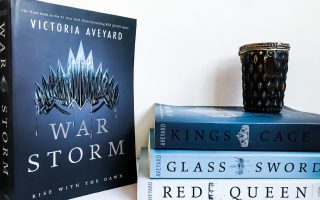During English literature in high school, we had to read The Wife of Bath from The Canterbury Tales by Geoffrey Chaucer. I loved that story and wanted to read more tales! Two years ago, I finally got myself a copy of the book, but didn’t start reading because of, well, a lot of other books. When I saw it listed on the Rory Gilmore Reading Challenge, I knew this would be the first book I would choose.
The version I read was a translation into modern English, since the Middle English it was written in is very hard to understand nowadays. Apparently, it was one of the first books to be written in Middle English, because the language for manuscripts was still Latin at the time. The book also gave an introduction to set this work by Chaucer in the right context. This was nice, because Chaucer’s time was so different from ours! Reading The Canterbury Tales had me time traveling. If you’re not into history, this book might be one to skip…
About the book
This book was written in a time where catholicism was big, which reflects in the characters: amongst the pilgrims are a monk, a nun’s priest, prioress, pardoner and a friar. It also reflects in the tales that are told: a lot of tales make references to biblical texts, saints or clergy. With my background in Religious Studies, it didn’t bother me at all – I could practice my knowlegde of catholicism. For people less comfortable with biblical names and stories, there sometimes were notes to explain things like this in the copy of the book I have.
Another source of inspiration were the Greek and Roman cultures. Some tales tell a story in an Ancient Greek setting like Athens, while others reference Roman emperors as an example of virtuous men or bad things. For instance, when describing how loud the screams of the characters were in The Nun’s Priest’s Tale, Chaucer mentions the burning of Rome by Nero (and that the characters in the tale made more noise than the people of Rome during the burning).
The Monk’s Tale consists of a lot of people, both biblical and ancient, and their bad luck. This is probably the best example to show how many references Chaucer makes! In this telling, however, also current events (as seen from Chaucer’s time) make an appearance. As the notes mention: some jokes are better understood by Chaucer’s audience of the fourteenth century, than by us.
Would I read it again?
Yes. Probably. But I know it takes a lot of time, because I am not a native speaker and the English is very “rich”. Similar to epic works like The Lord of the Rings and A Song of Ice and Fire, the language is not very welcoming to non-native readers. While beautiful, this can make it more difficult to read – especially when you don’t know the plotlines. I often choose to read these kinds of books in Dutch first, or watch the adaptation (whether it’s movie or a show on tv) to make myself acquainted with the characters, story and settings.
For The Canterbury Tales, that didn’t go. I had the English version and couldn’t wait to get started. So I am actually very proud of me finishing it, because it has been a struggle from time to time. It will definitely stay on my shelf, but it will take a few years before I read this book again.
If you haven’t read this work by Chaucer yet, I suggest you get yourself a copy. If you’re into history, religion and myth, this is a very good book to read. Be prepared for lots of references, rhyme, monologues that stretch over several pages, and fancy English. I sure can imagine why Rory Gilmore would read this book!



